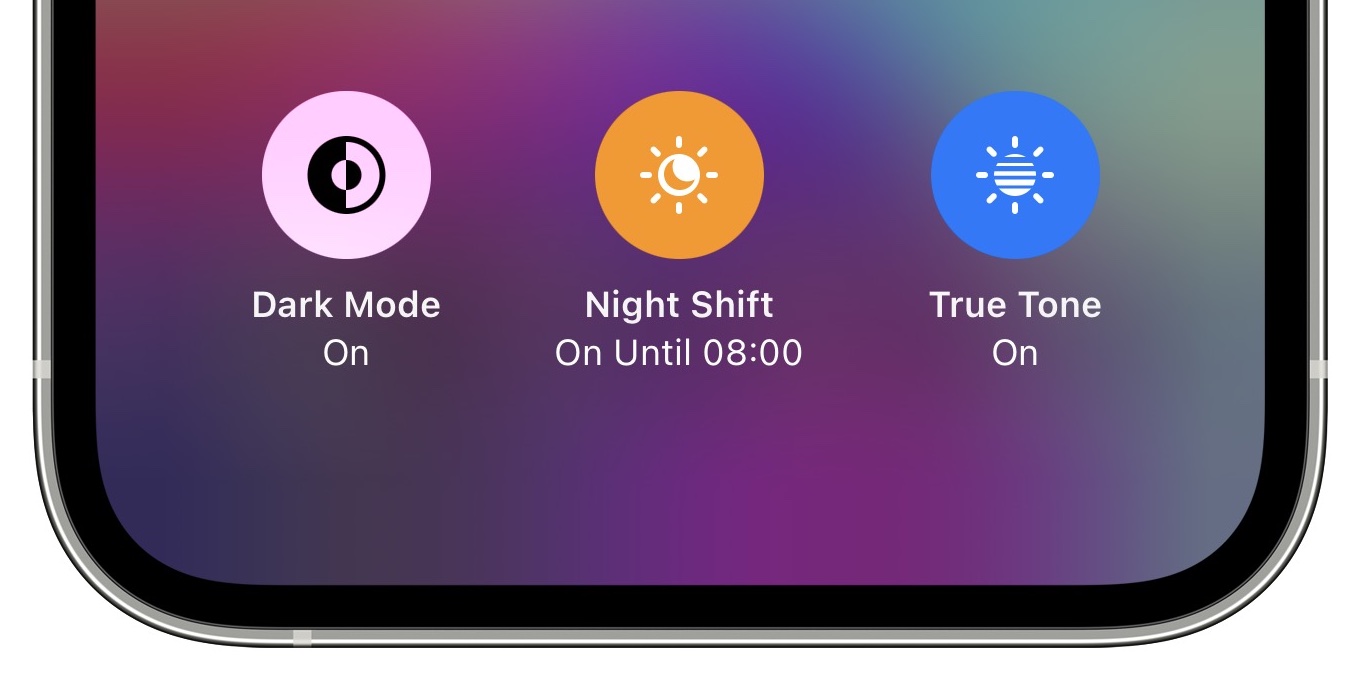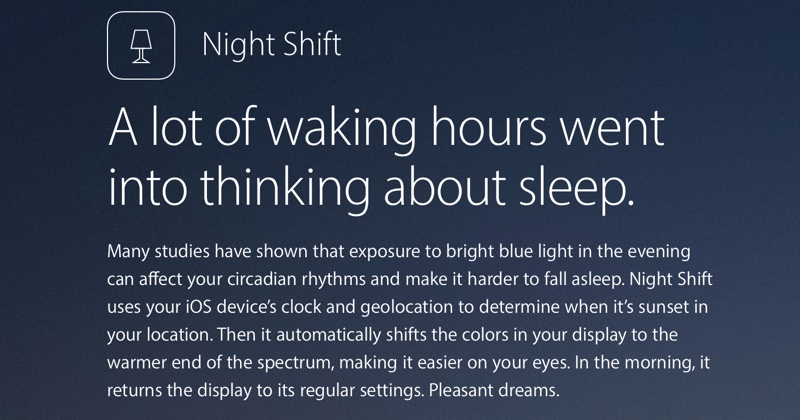
A new study looking at the effects of low-light functions on smartphone users' sleeping habits suggests that features like Apple's Night Shift mode don't actually improve sleep at all.

Introduced in iOS 9, Night Shift is designed to cut down on the amount of blue light that an iOS device puts out during the evening hours. The feature uses the clock and geolocation of an iPhone or iPad to determine when it's sunset, and automatically shifts the colors of the display to warmer colors, returning the display to its regular settings in the morning.
Now found on most smartphones in some form, Night Shift is based on studies that have demonstrated that blue light can negatively impact sleep by altering the body's circadian rhythm. However, the results of a new study from BYU published in Sleep Health have undermined that premise.
To test the theory, BYU psychology professor Chad Jensen and researchers from the Cincinnati Children's Hospital Medical Center compared the sleep outcomes of individuals in three categories: those who used their phone at night with the Night Shift function turned on, those who used their phone at night without Night Shift, and those who did not use a smartphone before bed at all.
The study included 167 adults between the ages of 18 to 24 who said they use a smartphone daily. The participants were asked to spend at least eight hours in bed, during which they wore an accelerometer on their wrist to record their sleep activity."In the whole sample, there were no differences across the three groups," Jensen said. "Night Shift is not superior to using your phone without Night Shift or even using no phone at all."
Individuals who were assigned to use their smartphone also had an app installed to monitor their phone use. The app measured sleep outcomes that included total sleep duration, sleep quality, wake after sleep onset and the time it took to fall asleep.
In the second part of the study, the researchers split the sample in two groups – one consisting of participants who averaged about seven hours of sleep, and another that included those who slept less than six hours each night.

The group that got seven hours of sleep saw a slight difference in sleep quality based on phone usage, while those who didn't use a phone before bed experienced better sleep quality compared to both those with normal phone use and those using Night Shift. Within the six-hour group, which had the least amount of sleep, there were no differences in sleep outcomes based on whether the participants used Night Shift or not.
The results suggest that blue light is only one factor that creates difficulty falling or staying asleep, and it's important not to discount the affect of physical interactions like texting, scrolling and posting on sleep outcomes.
Since its debut on iOS, Night Shift has been included in macOS since Sierra. Mac users can enable or disable the feature using the Night Shift tab in System Preferences -> Display."While there is a lot of evidence suggesting that blue light increases alertness and makes it more difficult to fall asleep, it is important to think about what portion of that stimulation is light emission versus other cognitive and psychological stimulations," said Jensen.
(Via BYU Communications.)
Article Link: BYU Study Suggests Night Shift Mode Doesn't Help iPhone Users Sleep

